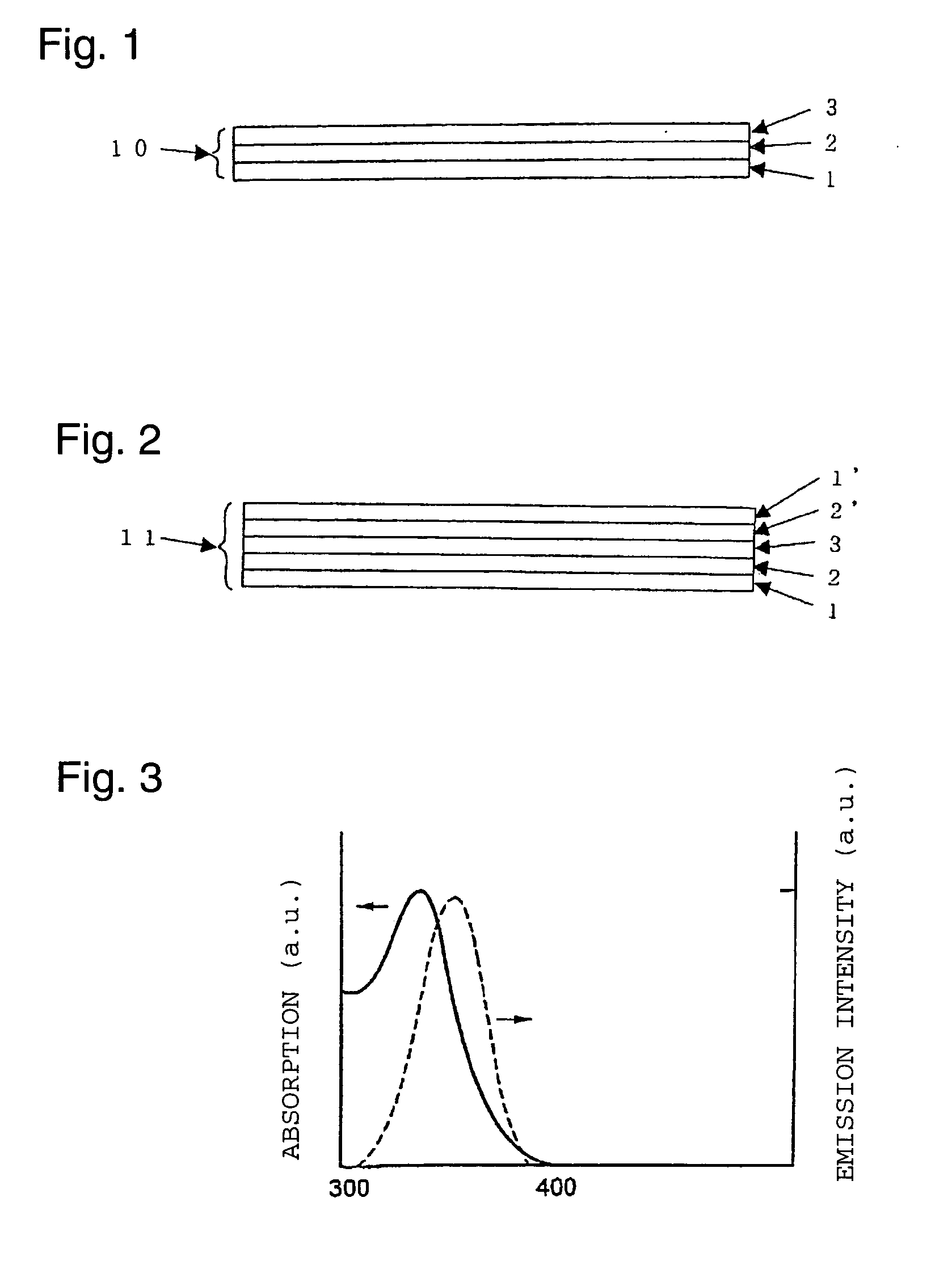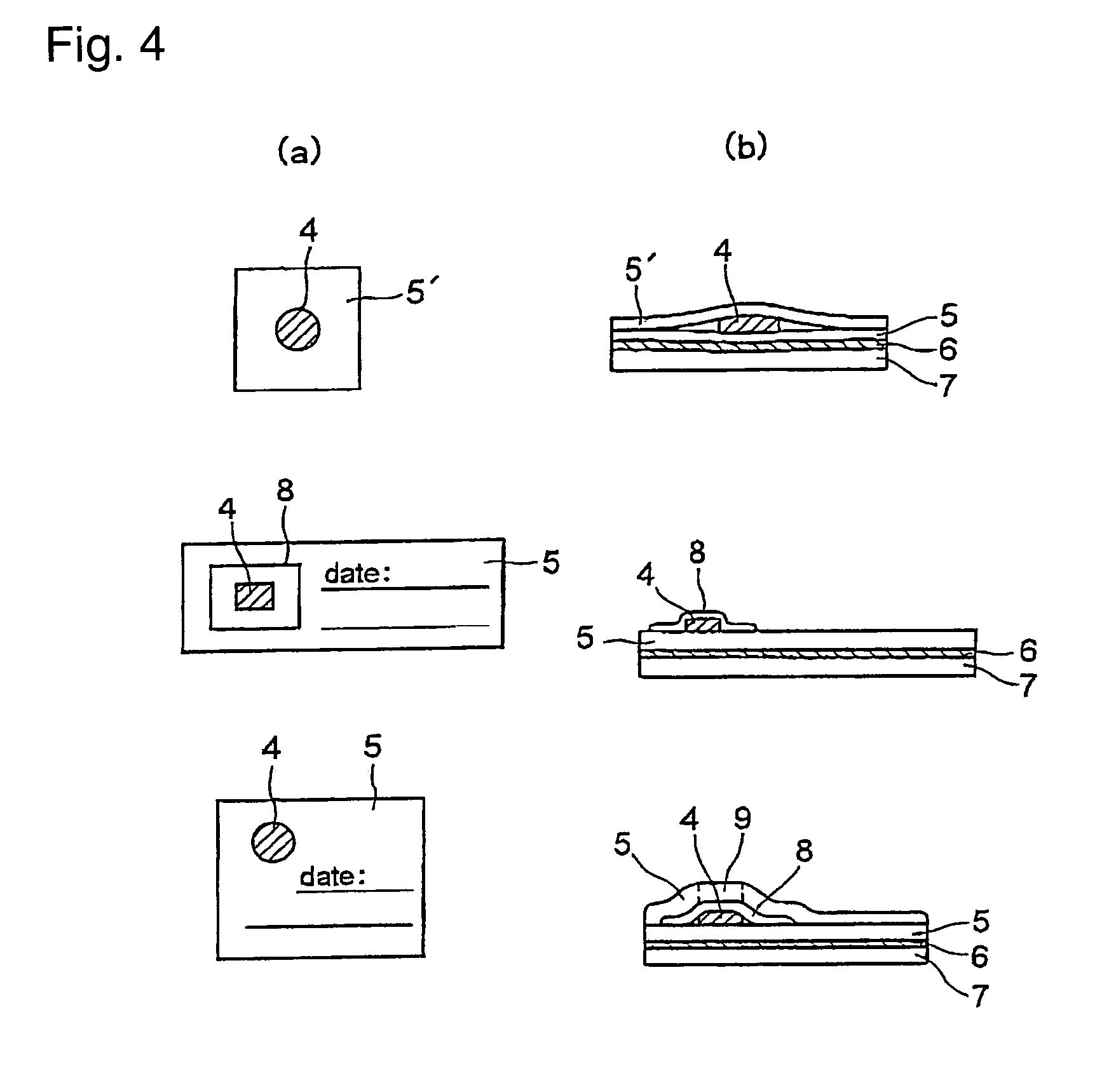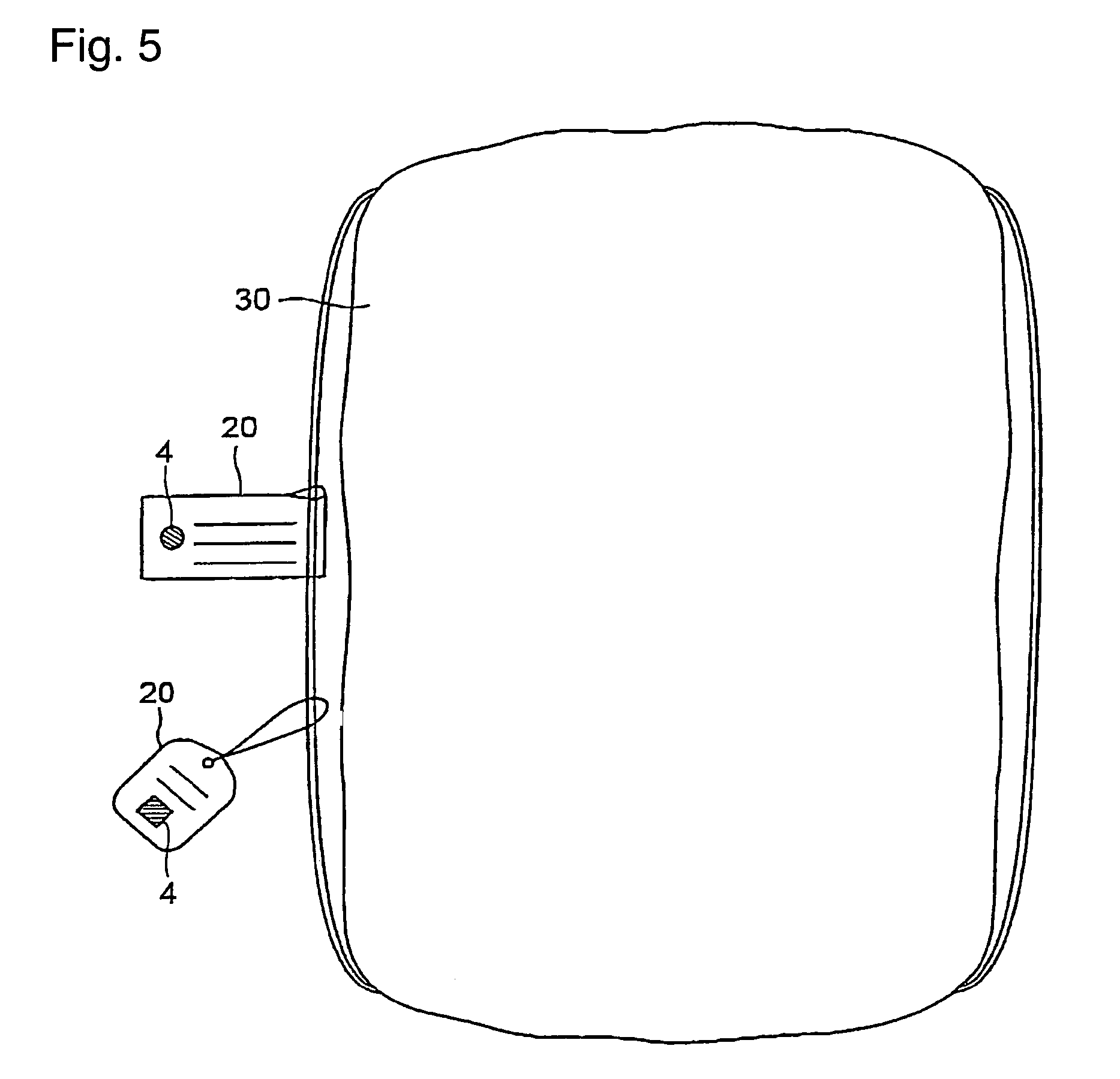Photochromic material and color dose meter using the same
a technology of color dose meter and photochromic material, which is applied in the direction of diffusion transfer process, instruments, photosensitive materials, etc., can solve the problems of color fading of color-changed portions, weak moisture resistance of alkali metal halide, and inability to detect presence or absence of such irradiation by this indicator
- Summary
- Abstract
- Description
- Claims
- Application Information
AI Technical Summary
Problems solved by technology
Method used
Image
Examples
example 1
[0191]
[0192]0.02 g of the above diarylethene compound (1) (a photochromic compound; quantum yield in the ring opening reaction: 1.3×10−2) and 0.2 g of a polystyrene resin were dissolved in 0.51 g of toluene, and 0.1 g of CeMgAl11O19 was added as an ultraviolet-emitting phosphor (illuminant), followed by stirring. Then, a white film having a thickness of 0.5 mm was prepared by a casting method.
[0193]To the prepared film, 100 Gy of γ-rays were irradiated by using 60Co as a radiation source, whereby the absorption spectra in the visible light wavelength range before and after the irradiation were measured. For the measurement, “Shimadzu Automatic Spectrophotometer UV-3100PC” (manufactured by Shimadzu Corporation) was employed, and the absorbance at 600 nm as the maximum absorption wavelength of the compound (1), was measured. The results are shown in Table 1.
example 2
[0194]The test was carried out under the same conditions as in Example 1 except that the ultraviolet-emitting phosphor (illuminant) CeMgAl11O19 in Example 1 was changed to SrB4O7:Eu2+. The results are shown in Table 1 given hereinafter.
example 3
[0195]4 g of an ultraviolet-emitting phosphor (illuminant) CeMgAl11O19 and 0.5 g of polyvinyl butyral were added to 5 ml of ethanol, followed by stirring. Then, coating and film-forming were carried out by means of a bar coater method on a support having an aluminum foil as a reflection plate provided on a transparent polyethylene terephthalate, to form a luminescent layer having a thickness of 0.1 mm. Further, a solution having 0.2 g of a polystyrene resin and 0.02 g of the above compound (1) (a photochromic compound) dissolved in toluene, was cast thereon, to form a photochromic layer having a thickness of 0.3 mm. To the prepared film, 100 Gy of γ-rays were irradiated by using 60Co as a radiation source, whereby the absorption spectra in the visible light range of the photochromic layer before and after the irradiation, were measured. The change in the absorbance at a wavelength of 600 nm as between before and after the irradiation of γ-rays, is shown in Table 1 given hereinafter....
PUM
| Property | Measurement | Unit |
|---|---|---|
| half-life time | aaaaa | aaaaa |
| wavelength | aaaaa | aaaaa |
| atomic numbers | aaaaa | aaaaa |
Abstract
Description
Claims
Application Information
 Login to View More
Login to View More - R&D
- Intellectual Property
- Life Sciences
- Materials
- Tech Scout
- Unparalleled Data Quality
- Higher Quality Content
- 60% Fewer Hallucinations
Browse by: Latest US Patents, China's latest patents, Technical Efficacy Thesaurus, Application Domain, Technology Topic, Popular Technical Reports.
© 2025 PatSnap. All rights reserved.Legal|Privacy policy|Modern Slavery Act Transparency Statement|Sitemap|About US| Contact US: help@patsnap.com



